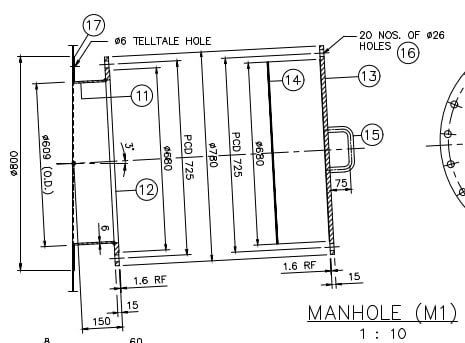VishalSathe
Mechanical
- Feb 2, 2008
- 4
Hello, I am currently working on a case for re-rating of pressure vessel.
The vessel is currently designed for 6 kPa and needs to be re-rated for 20 kPa.
I am checking the manway flange design (its a non standard flange- ring type flange with plate used as blind cover).
I tried ASME Appendix 2 design, however its not passing in gasket seating condition, however there is no overstress in operating condition.
My question is, since this is an existing vessel, is it necessary to re-check the flange design for gasket seating condition?
I would appreciate if you have some idea about similar issue.
The vessel is currently designed for 6 kPa and needs to be re-rated for 20 kPa.
I am checking the manway flange design (its a non standard flange- ring type flange with plate used as blind cover).
I tried ASME Appendix 2 design, however its not passing in gasket seating condition, however there is no overstress in operating condition.
My question is, since this is an existing vessel, is it necessary to re-check the flange design for gasket seating condition?
I would appreciate if you have some idea about similar issue.

